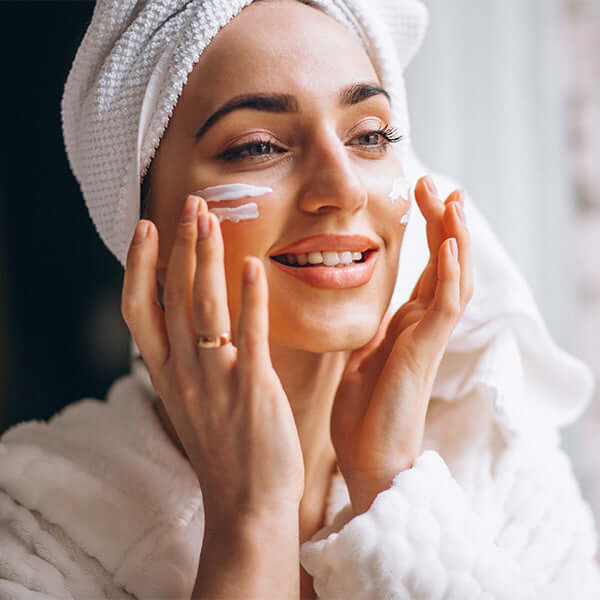Sunscreen is one of the most important steps in your skincare routine especially when you are heading out in the sun. But many people still feel confused about how to use sunscreen on the face. Should you apply it before or after moisturiser? How much should you use? What SPF is right for daily use? If you’ve ever asked these questions, you’re not alone.
This blog will guide you through how to apply sunscreen on your face correctly, how much to use, and tips to make it a smooth part of your everyday routine.
How to Use Sunscreen on Face
Many people use sunscreen but still end up with sunspots, tanning, or uneven skin tone. Why? Because applying sunscreen the wrong way is almost as bad as not using it at all. Whether you’re heading out for work or staying indoors with sunlight coming through windows, learning how to use sunscreen on your face properly can make all the difference in keeping your skin healthy, youthful, and protected long term.
1. Apply Sunscreen as the Last Step of Skincare
Sunscreen SPF50 should always be the final step in your skincare routine applied after moisturiser but before makeup. This allows it to create a protective barrier over your skin. If you apply it before moisturiser or mix it with other products, it can dilute the SPF, reducing its effectiveness.
2. Use Enough
Most people don’t use enough sunscreen, which is why they don’t get full protection. For your face and neck, use the two-finger rule to squeeze the sunscreen along the full length of your index and middle fingers. This amount ensures your skin gets even, proper coverage without missing spots.
3. Dot and Spread
Instead of rubbing a large blob of sunscreen in one go, dot small amounts across your face on your forehead, cheeks, nose, and chin then gently spread it evenly with your fingers. This helps avoid patchy coverage and ensures every part of your skin is protected.
4. Don’t Forget Key Areas
Many people skip areas like the neck, ears, hairline, and even eyelids which are highly exposed and sensitive to sun damage. These forgotten zones are where early signs of aging often show up. Make sure to blend your sunscreen into all areas where the sun can touch your skin, even the ones you don’t think about.
5. Reapply Every 2 to 3 Hours
Applying sunscreen in the morning is not enough especially if you’re outdoors, sweating, or exposed to sunlight for long hours. Reapply your sunscreen every 2 to 3 hours to maintain protection. If you wear makeup, gently reapply sunscreen by patting it over your skin with clean hands or a soft sponge to avoid disturbing your base.
What to Apply First: Moisturiser or Sunscreen?
If you have ever stood in front of the mirror wondering whether to apply moisturiser or sunscreen first, you’re not alone. It is one of the most asked skincare questions and the answer can make a big difference in how well your sunscreen works.
The simple rule? Moisturiser goes first, sunscreen goes last.
Your moisturiser hydrates the skin and locks in moisture. Sunscreen is meant to sit on top and act as a protective shield against UV rays. If you apply sunscreen before your moisturiser, you risk weakening its ability to protect your skin. Think of sunscreen as the final layer of defense. It is the barrier that keeps all the goodness in and the damage out.
Making this small change in your routine can help your skin stay better protected because skincare isn’t just about the products, it is about using them the right way.
Small Steps, Big Protection
Using sunscreen the right way is more than just a daily habit. It is an investment in your skin’s long-term health. Whether you are facing the harsh sun or staying indoors, protecting your skin from UV damage should never be skipped. From applying the correct amount to covering often-missed areas like your ears and neck, every small step matters. With the right technique and consistency, sunscreen can help you maintain clear, even-toned, and youthful-looking skin for years to come.
Start today, and give your skin the daily protection it truly deserves.
Frequently Asked Questions
1. Can we apply sunscreen at night?
Sunscreen is only needed during the day to protect against UV rays. At night, there's no sun exposure, so it is not necessary. Instead, use a nourishing night cream or moisturiser to help your skin repair while you sleep.
2. Can I apply sunscreen without moisturiser?
You can apply sunscreen without moisturiser, but if your skin feels dry or tight, it's better to hydrate first. Moisturiser helps keep your skin soft, while sunscreen protects it. Both work best when layered correctly.
3. Can we apply powder after sunscreen?
Yes, you can apply powder after sunscreen, especially if you want to control shine. Just make sure the sunscreen has fully absorbed before applying makeup to avoid disturbing the protective layer.
4. When to apply sunscreen during makeup?
Sunscreen should always be applied before makeup. It goes on after skincare (moisturiser) and before foundation or primer. Let it absorb fully for a few minutes to create a smooth, protected base.
5. Can I use sunscreen in winter?
Yes, sunscreen is essential even in winter. UV rays are present year-round and can still damage your skin on cloudy or cold days. Daily SPF use helps prevent long-term skin damage and premature aging.


 My Orders
My Orders
 Track Order
Track Order













Leave a comment
All comments are moderated before being published.
This site is protected by hCaptcha and the hCaptcha Privacy Policy and Terms of Service apply.